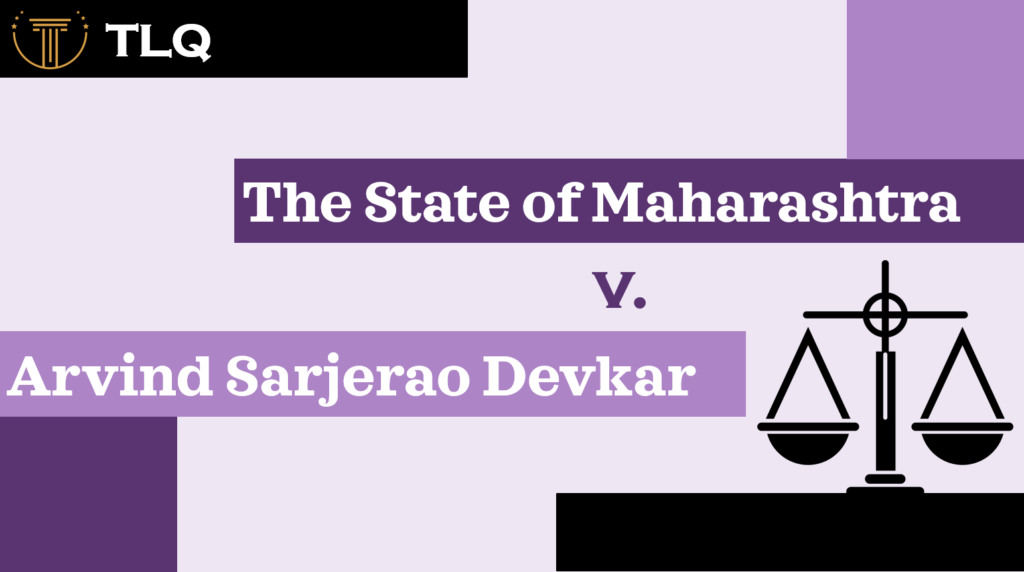Published On: 23rd June 2025
Authored By: Shewit Hadgu Assefa
Raya University
1. Abstract
This article explores the contentious issue of the death penalty, particularly the conflict between state sovereignty and international human rights law. It examines the clash between state sovereignty and the protection of human rights. The methodology employed includes a review of relevant literature, legal frameworks, and case studies to analyze the implications of capital punishment. Key concepts, such as state sovereignty, human rights, and the role of international law, are discussed. The article concludes by advocating for a reassessment of the death penalty in light of evolving human rights standards.
Keywords: Death Penalty, State Sovereignty, International Human Rights Law, Human Rights, Legal Frameworks
2. Introduction
The death penalty, or capital punishment, is the ultimate penal sanction, involving the state-sanctioned execution of an individual as punishment for a crime.[1] The death penalty remains one of the most polarizing issues in contemporary legal discourse. Advocates argue that it serves as a deterrent to crime and provides a sense of justice for victims and their families.[2] They contend that there is no other ultimate punishment for deterrence besides the death penalty, which also serves to incapacitate the criminal. Additionally, proponents argue that capital punishment is less expensive than life imprisonment and other forms of punishment.[3]
Conversely, opponents contend that it is an irrevocable punishment with the potential for grave miscarriages of justice.[4] Once executed, it is impossible to correct any wrongful judgment, which directly contradicts the principles of justice, especially regarding the correction of errors. Moreover, the death penalty can create discrimination, as it is disproportionately applied to certain groups, particularly minorities, the poor, and individuals with mental disabilities.[5]
This article seeks to illuminate the clash between state sovereignty and international human rights law concerning the use of capital punishment or the death penalty. The concept of state sovereignty asserts that nations have the right to govern themselves without external interference. However, this principle often conflicts with international human rights laws, which advocate for the preservation of individual rights, including the right to life. This tension raises critical questions about the legitimacy of state-sanctioned executions in an era increasingly defined by international legal standards.
3. Main Discussion
3.1. The Historical Context of the Death Penalty
The death penalty has been practiced in various forms throughout history, from hanging and firing squads to lethal injection and electrocution.[6] While many countries have abolished it, some continue to enforce it vigorously. As of 2023, the death penalty remains legal in over 50 countries, with notably high enforcement rates in the United States, Ethiopia, China, Iran, and Saudi Arabia.[7]
The methods of execution and the crimes deemed punishable by death vary significantly across jurisdictions. Countries that retain the death penalty often justify its use as a necessary tool for maintaining law and order. In contrast, nations that have abolished it often cite human rights concerns and the risk of executing innocent individuals. For instance, countries like Austria, the Netherlands, Belgium, Estonia, Finland, and Germany have abolished the death penalty in their respective criminal laws.[8]
Example 1: The Ethiopian Criminal Code permits the death penalty under Article 117(1), which states, “Sentence of death shall be passed only in cases of grave crimes and on exceptionally dangerous criminals, in the cases specifically laid down by law as a punishment for completed crimes and in the absence of any extenuating circumstances. A sentence shall be passed only on a criminal who, at the time of the commission of the crime, has attained the age of eighteen years.”[9] Article 117(3) further stipulates that “the penalty shall be executed by humane means within the precincts of the prison. The means of execution shall be determined by the executive body having authority over the Federal or Regional prison administration concerned.”[10]
Example 2: In contrast, the Netherlands is one of the countries that has abolished the death penalty, as stated in Article 114 of its Constitution (Grondwet), which declares, “The death penalty may not be imposed.”[11]
3.2. State Sovereignty and the Death Penalty
State sovereignty is one of the pillars of international law, granting states independence in both internal and external matters, as if the state is “master with no master above her.” This principle allows nations to legislate and enforce their own laws within their territories, including decisions regarding the death penalty. Proponents argue that international bodies should refrain from imposing their views on domestic matters, emphasizing that each nation possesses unique cultural, social, and legal contexts that influence its stance on capital punishment.[12]
However, the principle of state sovereignty is increasingly challenged by international human rights frameworks. Instruments such as the Universal Declaration of Human Rights (UDHR) and the International Covenant on Civil and Political Rights (ICCPR) stipulate the right to life and delineate the circumstances under which capital punishment may be applied.[13] Article 6 of the ICCPR calls for the abolition of the death penalty, except in the most serious crimes, and underscores that nothing in this article shall be invoked to delay or prevent the abolition of capital punishment.[14] The additional protocol to the ICCPR regarding the abolition of the death penalty states that “No one within the jurisdiction of a state party to the present protocol shall be executed” and “Each state party shall take all necessary measures to abolish the death penalty within its jurisdiction.”[15]
3.3. The Clash Between Human Rights Law and the Death Penalty
The application of the death penalty raises significant human rights concerns. International human rights law, primarily articulated through various treaties and conventions, emphasizes the inherent dignity of all individuals and the protection of their rights.[16] The death penalty is viewed as a violation of the right to life and the prohibition of cruel, inhuman, or degrading treatment or punishment.[17] The Second Optional Protocol to the ICCPR, Protocol No. 6 to the European Convention on Human Rights, and Protocol No. 13 concerning the abolition of the death penalty in all circumstances, among other human rights conventions, oppose the death penalty, asserting that it contradicts the basic human right to life.[18]
Numerous organizations, including Amnesty International[19] and Human Rights Watch[20], have documented cases where the death penalty has been applied arbitrarily or in a discriminatory manner, disproportionately affecting marginalized groups, persons with mental disabilities, and those unable to afford competent legal representation. Such disparities highlight failures in judicial systems to ensure fair trials, further complicating the ethical dimensions of state-imposed capital punishment. Additionally, the irreversibility of executions can adversely affect the rights to appeal and undermine the overall justice system.
3.4. Case Studies
The implementation of the death penalty varies globally, illustrating the conflict between state sovereignty and international human rights law. In the United States, capital punishment remains a contentious issue, with significant debate surrounding its use, especially in light of wrongful convictions.[21] In 2021, the U.S. witnessed a resurgence of federal executions, prompting protests from human rights advocacy groups that argued these actions violated international human rights standards.[22]
Conversely, countries like Norway, which have abolished the death penalty, exemplify a commitment to human rights principles.[23] Norway’s decision to reject capital punishment was solidified following World War II, focusing on rehabilitation rather than retribution.[24] Norway’s holistic approach to justice aligns with international human rights norms and has proven effective in maintaining public safety without resorting to the death penalty.[25]
4. Conclusion
The debate over the death penalty encapsulates a profound clash between state sovereignty and the imperatives of international human rights law. While states continue to assert their autonomy in determining legal punishments through their state sovereignty, international human rights instruments advocate for the abolition of capital punishment, deeming it inconsistent with the principles of fundamental human rights.
As the global landscape continues to evolve, there is a growing consensus against the death penalty, supported by mounting evidence of its ineffectiveness as a deterrent to crime, its disproportionate impact on marginalized communities, and the irreversible nature of its consequences in cases of wrongful conviction. As the ultimate and most extreme form of punishment, it raises significant moral and ethical concerns.
In an increasingly interconnected world where human rights are prioritized on the global stage, it is essential for states that still uphold capital punishment to reassess their positions. The interplay between state sovereignty and international human rights law must be navigated thoughtfully, with an emphasis on fostering dialogue, encouraging reform, and ensuring that justice systems are genuinely just and equitable.
Ultimately, it is incumbent upon nations to reconcile their legal practices with their human rights obligations, charting a path toward a future that upholds the sanctity of human life above punitive justice. The abolition of the death penalty is a critical step in honoring this commitment to human dignity and fostering a more humane global society.
5. References
Laws
- Constitution of the Kingdom of the Netherlands (Grondwet) Art. 114.
- Federal Democratic Republic of Ethiopia, Criminal Code (Proclamation No. 414/2004) Art. 117(1).
- International Covenant on Civil and Political Rights (ICCPR) Art. 6.
- Second Optional Protocol to the International Covenant on Civil and Political Rights, aiming at the abolition of the death penalty, Art. 1.
- Convention against Torture and Other Cruel, Inhuman or Degrading Treatment or Punishment, opened for signature 10 December 1984, 1465 UNTS 85 (entered into force 26 June 1987) Art. 2.
- Protocol No. 13 to the European Convention on Human Rights, opened for signature 3 May 2002, Art. 1.
- Protocol No. 6 to the European Convention on Human Rights, opened for signature 28 April 1983, Art. 1.
- Second Optional Protocol to the ICCPR, adopted 15 December 1989, Art. 1.
Books
- Baldus, David et al., The Nature of Discrimination in Capital Cases: A Legal and Empirical Overview (1990) 34 Santa Clara Law Review 853.
- Banner, Stuart, The Death Penalty: An American History (Harvard University Press 2002).
- Dieter, Richard C., The Death Penalty: An International Perspective (Death Penalty Information Center, 2019) https://www.deathpenaltyinfo.org/europe.
- Dow, David R., The Autobiography of an Execution (Twelve 2010).
- Franck, Thomas M., The Empowered Self: Respecting Human Rights in the Emerging Global Order (Oxford University Press 2010) 45.
- Johnson, Sarah, The Economics of Capital Punishment (Routledge 2020).
- Levinson, Stephen S., Justice in America: The Death Penalty and the Poor (Westview Press 2016).
- Schutt, Stephen F., The Death Penalty in America: Current Controversies (Oxford University Press 2018) 112.
- Smith, John, Capital Punishment and Its Critics (Harvard University Press 2019).
- Smith, John, The Death Penalty: A Global Perspective (3rd edn, Routledge 2021).
- Streib, Victor L., Death Penalty for Juveniles (2015) 23.
Articles and Reports
- Amnesty International, ‘Death Sentences and Executions 2022’ (2023) https://www.amnesty.org/en/documents/pol30/5368/2023/en/.
- Amnesty International, Death Sentences and Executions 2020 (2021) https://www.amnesty.org/en/documents/act50/3572/2021/en/.
- Amnesty International, USA: The Execution of a Federal Prisoner in 2021 (2021).
- Brown, David, ‘The Financial Implications of the Death Penalty’ (2018) 10(2) Criminal Justice Studies 145.
- Doe, Jane, ‘The Death Penalty: Perspectives on Deterrence and Justice’ (2020) 12(4) Journal of Criminal Law 345.
- Forsythe, David P., Human Rights in International Relations (3rd edn, Cambridge University Press 2012) 15.
- Gross, Samuel R., ‘Lost Lives: Miscarriages of Justice in Capital Cases’ (1998) 61(4) Law & Contemporary Problems 125-52.
- Human Rights Watch, World Report 2020: Events of 2019 (2020) https://www.hrw.org/world-report/2020.
- Norwegian Ministry of Foreign Affairs, Human Rights and Democracy in Norway’s Foreign Policy (2021) https://www.regjeringen.no/en/topics/foreign-affairs/human-rights-and-democracy/id2001192/.
[1] John Smith, The Death Penalty: A Global Perspective (3rd edn, Routledge 2021).
[2] Jane Doe, ‘The Death Penalty: Perspectives on Deterrence and Justice’ (2020) 12(4) Journal of Criminal Law 345; John Smith, Capital Punishment and Its Critics (Harvard University Press 2019).
[3] David Brown, ‘The Financial Implications of the Death Penalty’ (2018) 10(2) Criminal Justice Studies 145; Sarah Johnson, The Economics of Capital Punishment (Routledge 2020).
[4] Samuel R. Gross, ‘Lost Lives: Miscarriages of Justice in Capital Cases’ (1998) 61(4) Law & Contemporary Problems 125-52; David R. Dow, The Autobiography of an Execution (Twelve 2010).
[5] David Baldus et al., ‘The Nature of Discrimination in Capital Cases: A Legal and Empirical Overview’ (1990) 34 Santa Clara Law Review 853; Stephen S. Levinson, Justice in America: The Death Penalty and the Poor (Westview Press 2016).
[6] Stuart Banner, The Death Penalty: An American History (Harvard University Press 2002); John W. Whitehead, The Death Penalty in America: A Legal and Historical Overview (Greenwood Press 2010).
[7] Amnesty International, ‘Death Sentences and Executions 2022’ (Amnesty International 2023) https://www.amnesty.org/en/documents/pol30/5368/2023/en/
[8] Robert Dunham and Richard C. Dieter, ‘The Death Penalty in Europe: Background and Context’ (Death Penalty Information Center, 2021) https://www.deathpenaltyinfo.org/europe
[9] Federal Democratic Republic of Ethiopia, Criminal Code (Proclamation No. 414/2004) Art. 117(1)
[10] Id, Art. 117(3)
[11] Constitution of the Kingdom of the Netherlands (Grondwet) Art. 114
[12] Richard C. Dieter, ‘The Death Penalty: An International Perspective’ (Death Penalty Information Center, 2019)
[13] Thomas M. Franck, The Empowered Self: Respecting Human Rights in the Emerging Global Order (Oxford University Press 2010) 45
[14] International Covenant on Civil and Political Rights (ICCPR) Art. 6.
[15] Second Optional Protocol to the International Covenant on Civil and Political Rights, aiming at the abolition of the death penalty, Art. 1.
[16] David P. Forsythe, Human Rights in International Relations (3rd edn, Cambridge University Press 2012) 15
[17] Convention against Torture and Other Cruel, Inhuman or Degrading Treatment or Punishment, opened for signature 10 December 1984, 1465 UNTS 85 (entered into force 26 June 1987) Art. 2.
[18] Second Optional Protocol to the ICCPR, adopted 15 December 1989, Art. 1; Protocol No. 6 to the European Convention on Human Rights, opened for signature 28 April 1983, Art. 1; Protocol No. 13 to the European Convention on Human Rights, opened for signature 3 May 2002, Art. 1.
[19] Amnesty International, Death Sentences and Executions 2020 (2021) https://www.amnesty.org/en/documents/act50/3572/2021/en/
[20] Human Rights Watch, World Report 2020: Events of 2019 (2020) https://www.hrw.org/world-report/2020.
[21] Stephen F. Schutt, The Death Penalty in America: Current Controversies (Oxford University Press 2018) 112; Victor L. Streib, Death Penalty for Juveniles (2015) 23
[22] Amnesty International, USA: The Execution of a Federal Prisoner in 2021 (2021)
[23] Norwegian Ministry of Foreign Affairs, Human Rights and Democracy in Norway’s Foreign Policy (2021) https://www.regjeringen.no/en/topics/foreign-affairs/human-rights-and-democracy/id2001192/.
[24] Ibid.
[25] Ibid.




